New KVMs, Travel Routers and WiFi 7 Tech on the way from Gl.iNet Soon
Gl.iNet is preparing several new devices for late 2025 and early 2026 that expand its presence in mobile networking, remote access management, and high speed home routing. These include the Beryl 7 travel router, the Comet 5G RedCap KVM with an integrated WiFi access point, and the Flint 3e dual band WiFi 7 desktop router. Each system is positioned to address a specific operational requirement, ranging from portable VPN-enabled wireless access to remotely deployable KVM control and multi gigabit home connectivity. The updated lineup also includes the Brume 3 high speed VPN security gateway, which builds on the Brume 2 by adding faster encrypted throughput and broader support for open VPN standards such as AmneziaVPN. Collectively, these releases indicate that Gl.iNet is prioritising more capable processors, improved wireless performance, and tighter integration between VPN features and local network tools.

Beryl 7 Travel Router (GL-MT3600BE)
The Beryl 7 is positioned as an updated travel router that builds on the feature set of the original Beryl while shifting to a more capable Qualcomm quad core processor running at 1.1GHz and 1GB of DDR4 memory. It uses IEEE 802.11a, b, g, n, ac, ax and be wireless standards and supports dual band WiFi 7 operation on the 2.4GHz and 5GHz bands. Although it does not include 6GHz support, it delivers higher throughput than its predecessor, reaching 688Mbps on 2.4GHz and 2882Mbps on 5GHz. The unit also integrates two foldable external antennas and two 2.5GbE ports that can be configured as WAN plus LAN or as dual LAN for specific on-the-go deployment requirements.
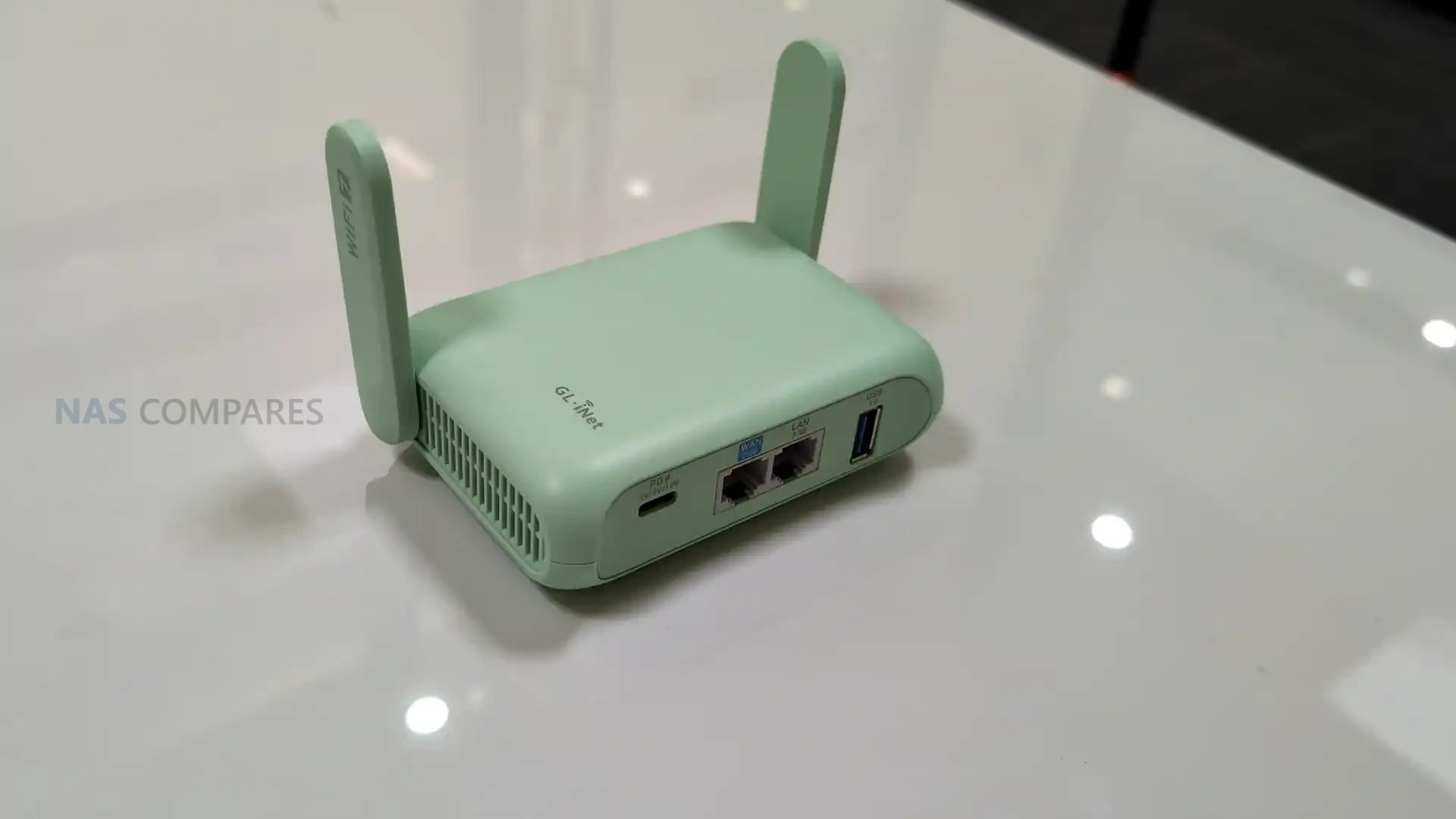
The system maintains the travel-focused design of the original model by keeping compact dimensions, low power requirements and USB-C power delivery suitable for laptops, power banks and small chargers. The physical toggle switch remains, allowing quick selection between standard routing and VPN operation without navigating menus. VPN capability is supported by OpenVPN DCO, WireGuard and AmneziaVPN, enabling users to run a VPN server at home and connect to it through the Beryl 7 when travelling. As noted during the demonstration, the WiFi 7 implementation prioritises improved packet handling and multi-link operation rather than wide-band 6GHz performance, which keeps the device compatible in regions where 6GHz availability is limited or restricted.
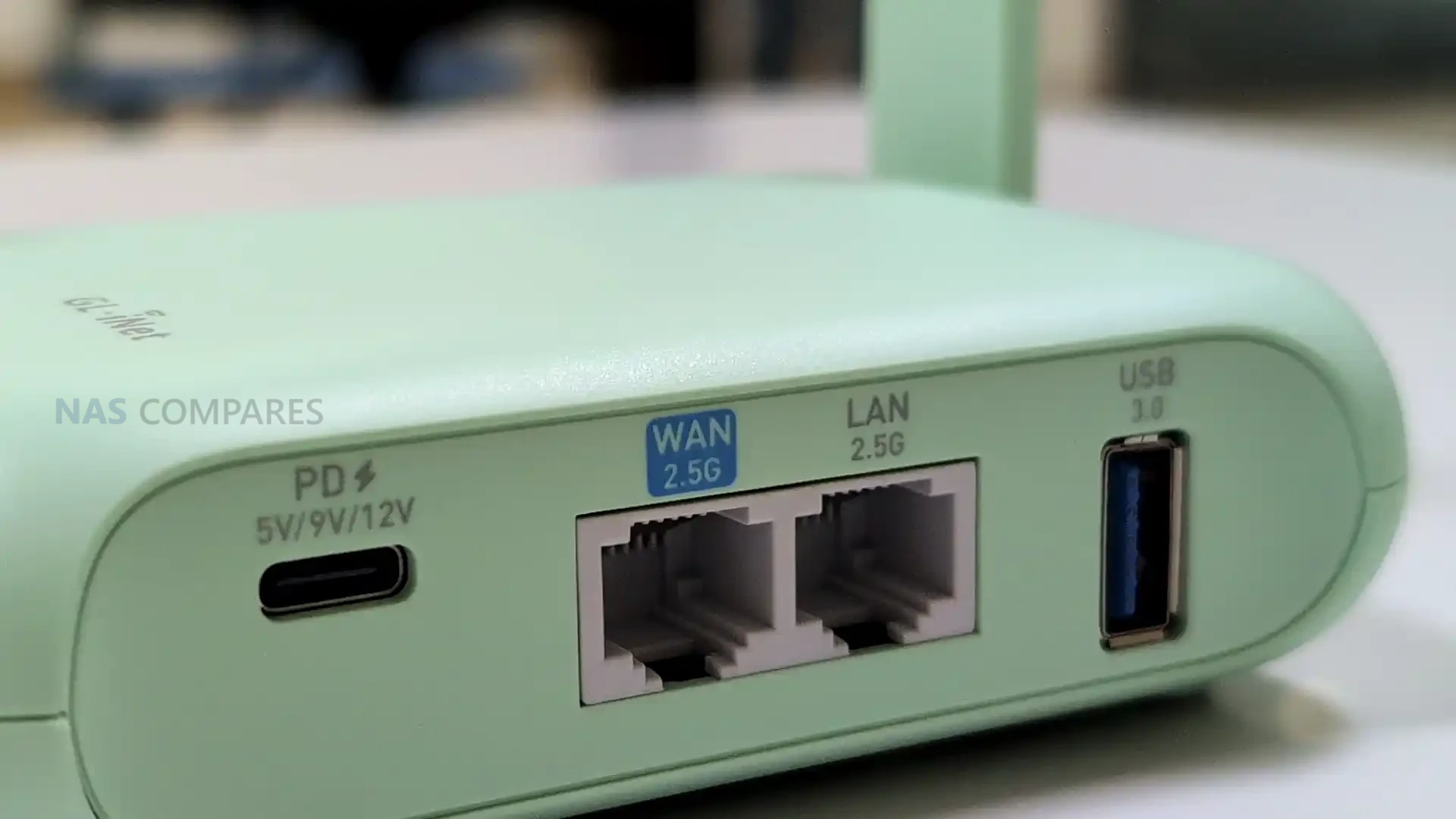
The Beryl 7 aims to retain pricing similar to the original Beryl while scaling both its internal hardware and wireless capabilities. It uses a gigabit-class Ethernet configuration, supports sub-18W peak power draw and retains a form factor suited for hotel WiFi, temporary offices and public hotspot environments. The inclusion of 2.5GbE, higher throughput on both bands and broader VPN support allows it to operate as a compact edge router for users needing reliable encrypted access across multiple devices. Despite carrying a WiFi 7 label, it does not support the 6GHz band, mirroring the Slate 7, and instead focuses on maximising performance within the 2.4GHz and 5GHz ranges. Nevertheless, this is going to be a disappointment to users who were hoping to see ‘full fat’ WiFi 7 with that 3rd frequency in play, and really maximize MLO use.
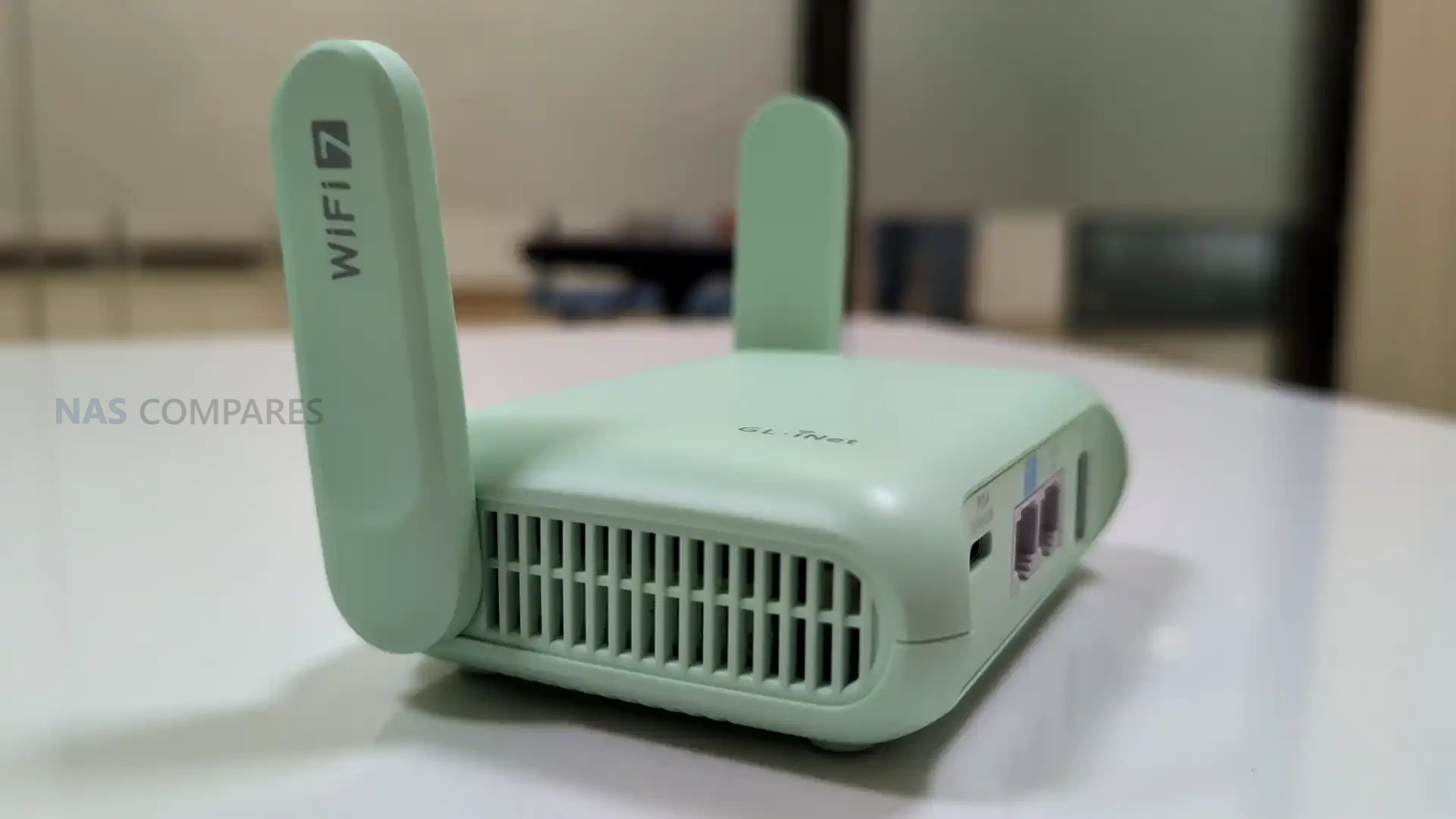 |
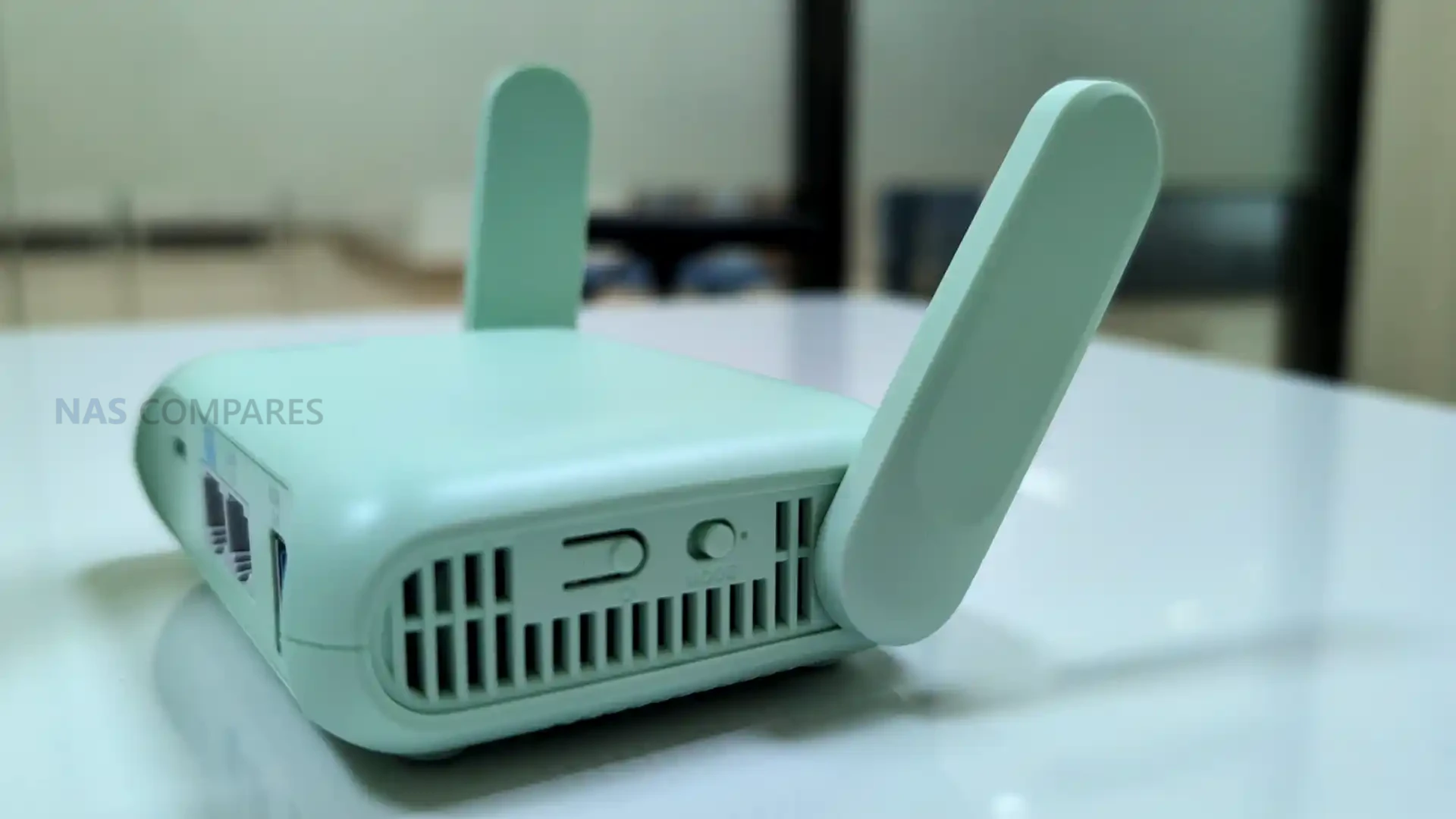 |
Comet 5G KVM with Redcap 5G SIM/LTE Support (GL-RM10RC)
The Comet 5G is a RedCap-based KVM device that integrates remote management, HDMI capture and mobile connectivity into a single compact unit. It uses a quad core ARM Cortex-A53 processor, 1GB of DDR3 memory and 64GB of eMMC storage, matching the hardware profile of the existing Comet Pro. The device includes both HDMI in and HDMI out, allowing it to be used for remote console access, system monitoring and basic pass-through scenarios. A 2.22-inch touchscreen provides local visual feedback including IP address, active WiFi status and connection indicators. Wireless capability is delivered through 802.11a/n/ac/ax at 150Mbps on 2.4GHz and 286Mbps on 5GHz, supported by an external dual band WiFi 6 antenna rather than a WiFi 7 module.
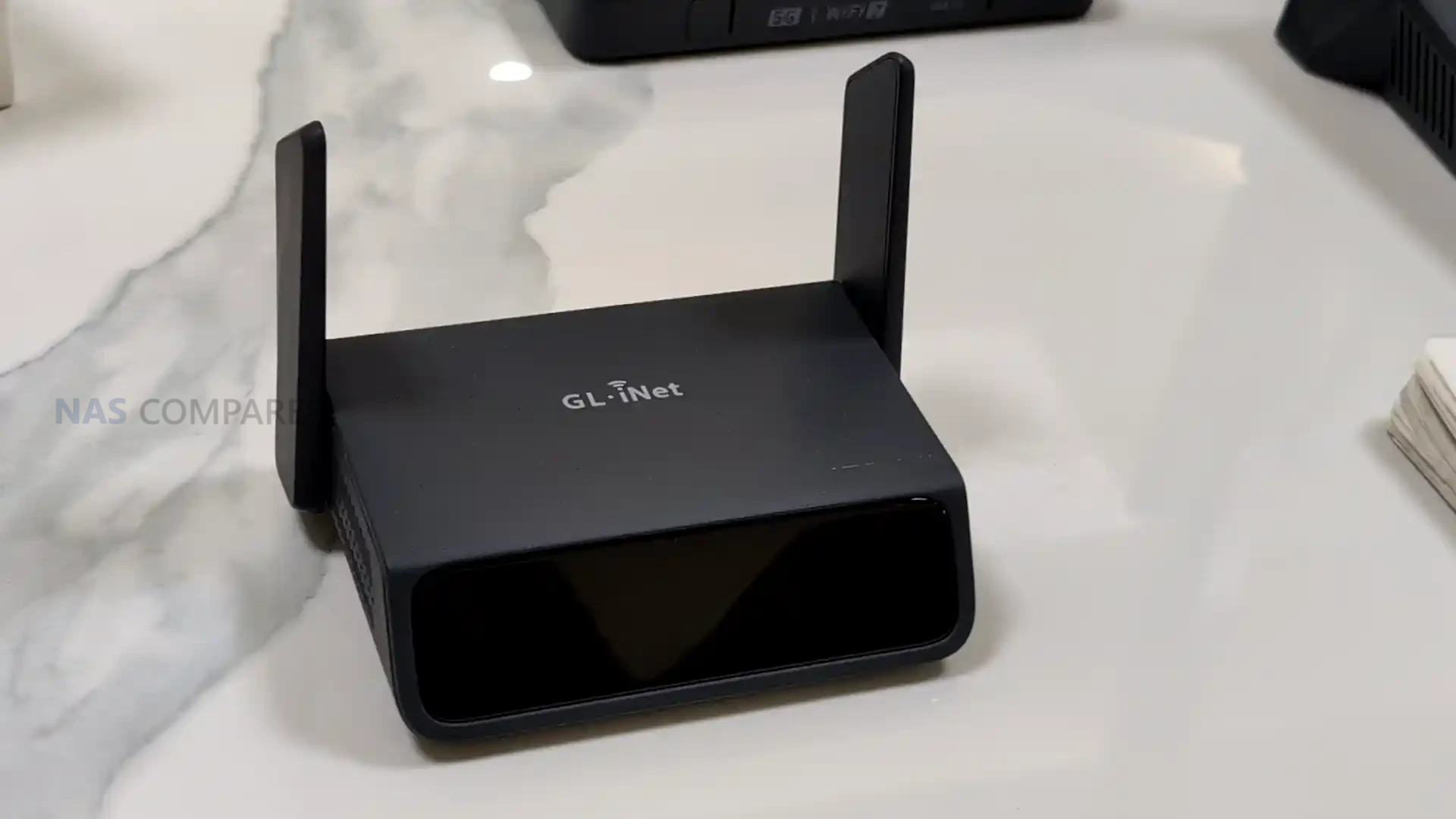
A key addition to this model is the integrated 5G RedCap SIM slot. This allows the device to operate independently of the local network when deployed on-site, which is relevant for administrators or engineers who need to access remote systems without relying on customer-provided WiFi or Ethernet. The mobile connection also supports failover for situations where the primary network becomes unavailable, ensuring that remote KVM access remains possible. During the demonstration, it was highlighted that this improves usability for workloads such as multi-day monitoring or configuration tasks performed in locations where network restrictions or firewall rules prevent direct access.
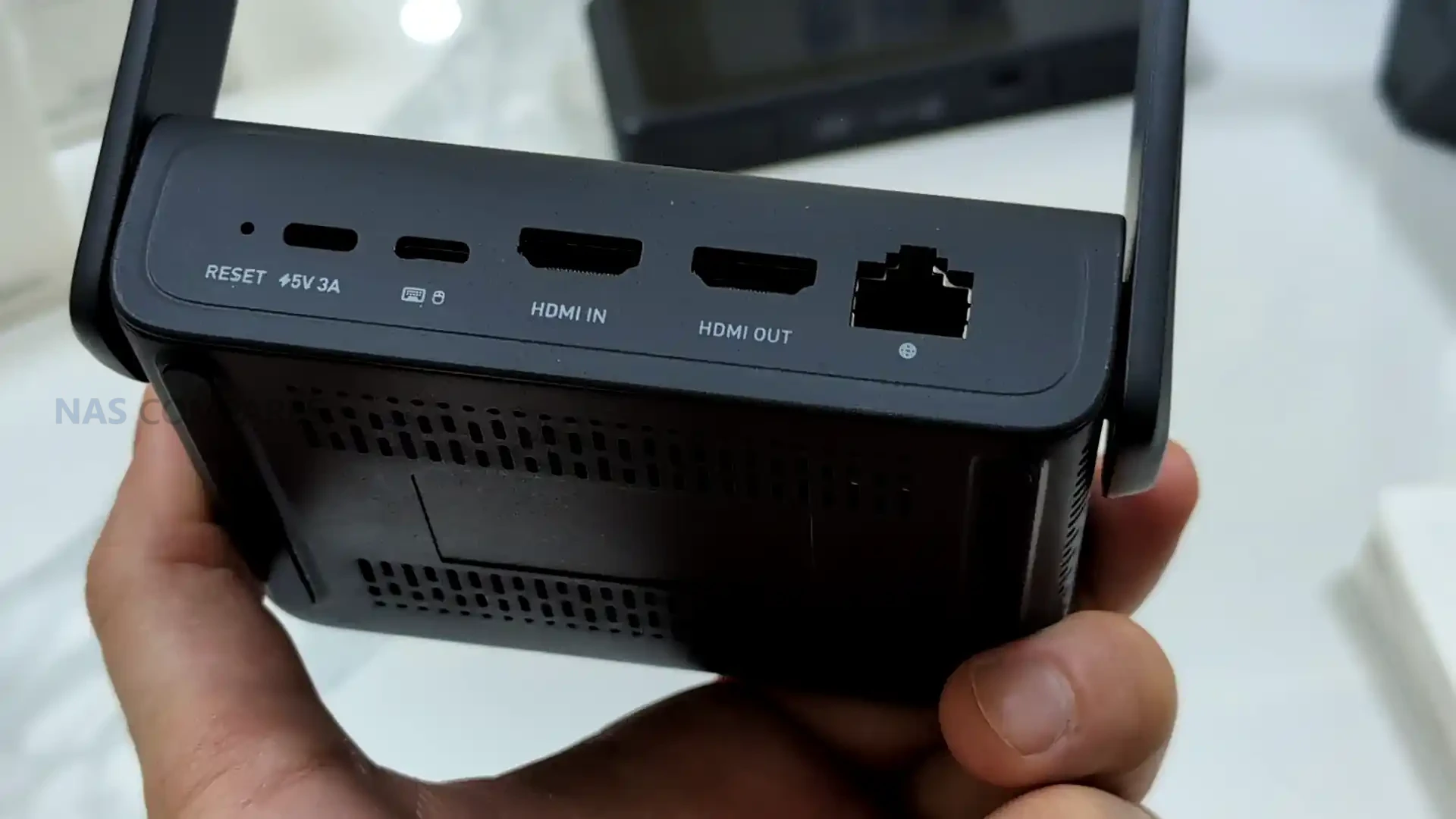
The Comet 5G retains a familiar selection of ports including USB-C for power, USB-A for peripherals, a gigabit Ethernet port for direct LAN connection and a SIM slot for mobile data. The device is not PoE-powered, although an injector or adapter is expected to be offered as an accessory. This approach keeps the unit closer in design to a travel-friendly tool rather than a fixed enterprise appliance. It remains suited to users who already deploy compact KVM units as part of their field equipment and who require a method of accessing remote devices through either wired, wireless or cellular links.
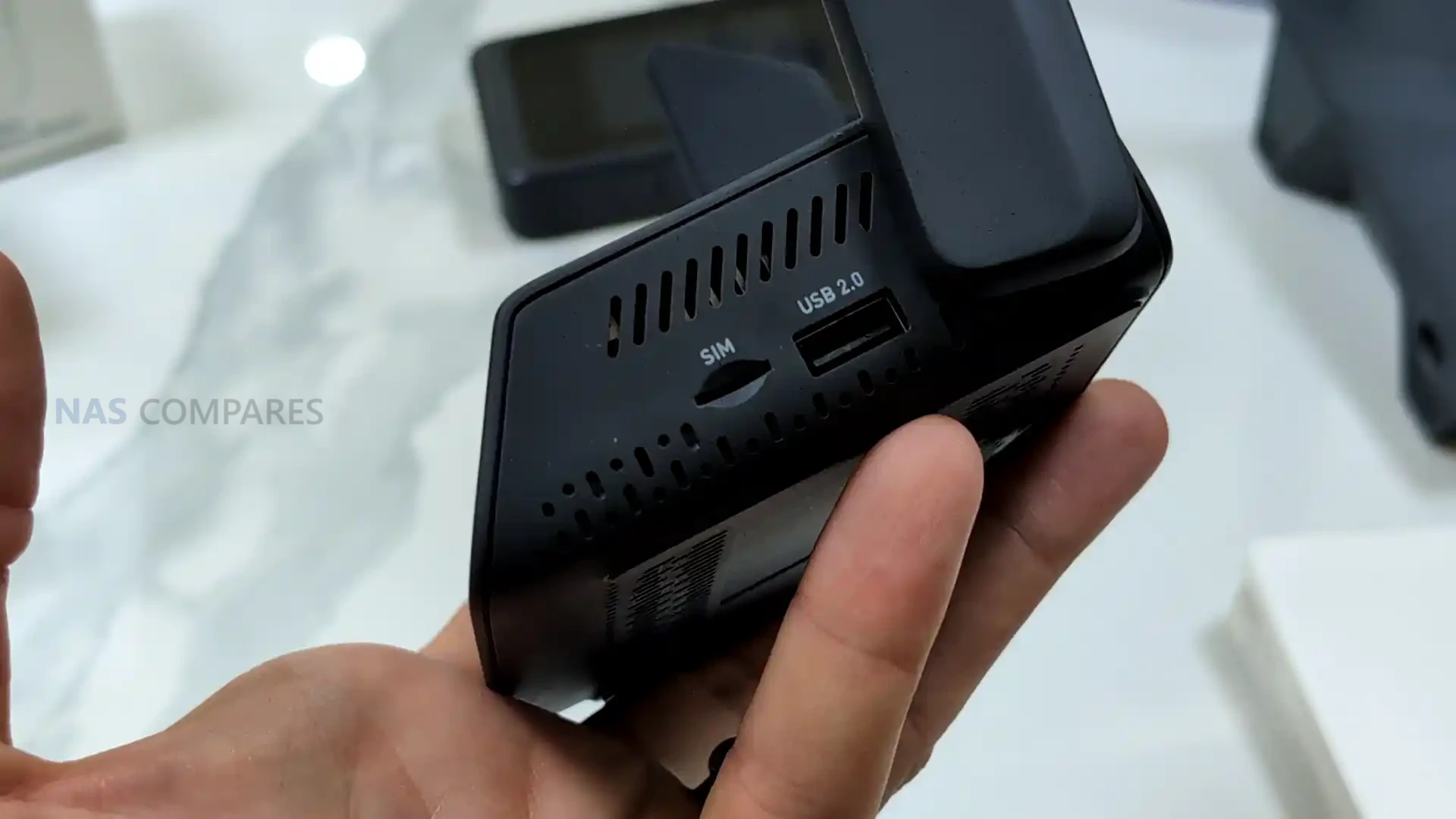
The combination of 5G failover and HDMI-based remote access positions it as a small-scale management device for distributed environments, temporary field sites or systems that require out-of-band connectivity. Many users will make comparisons between this and the recently crowdfunded ‘Comet Pro’ device (very similar, but alongside a few small changes internally and adjustable antennae, also does not support a 5G SIM CARD/LTE), as well as the Comet PoE device recently released. This is largely the same, but tailored towards a different, decidedly more mobile deployment.
Flint 3e Dual Band WiFi 7 Router (GL-BE5600)
The Flint 3e is a dual band WiFi 7 router aimed at users who want higher wireless throughput and multi gigabit Ethernet connectivity without moving to a full tri band system. It is built around a Qualcomm quad core processor running at 1.5GHz with 1GB of DDR4 memory and 512MB of NAND storage. Wireless support covers IEEE 802.11a, b, g, n, ac, ax and be, delivering 688Mbps on 2.4GHz and 5764Mbps on 5GHz. The unit includes four external foldable antennas, a dual colour LED indicator and a housing designed for stable operation in home or small office environments. Connectivity is centred around five 2.5GbE ports, with one operating as a dedicated WAN input and the remainder configurable as LAN. This gives the router a faster wired backbone than earlier consumer models from the brand.
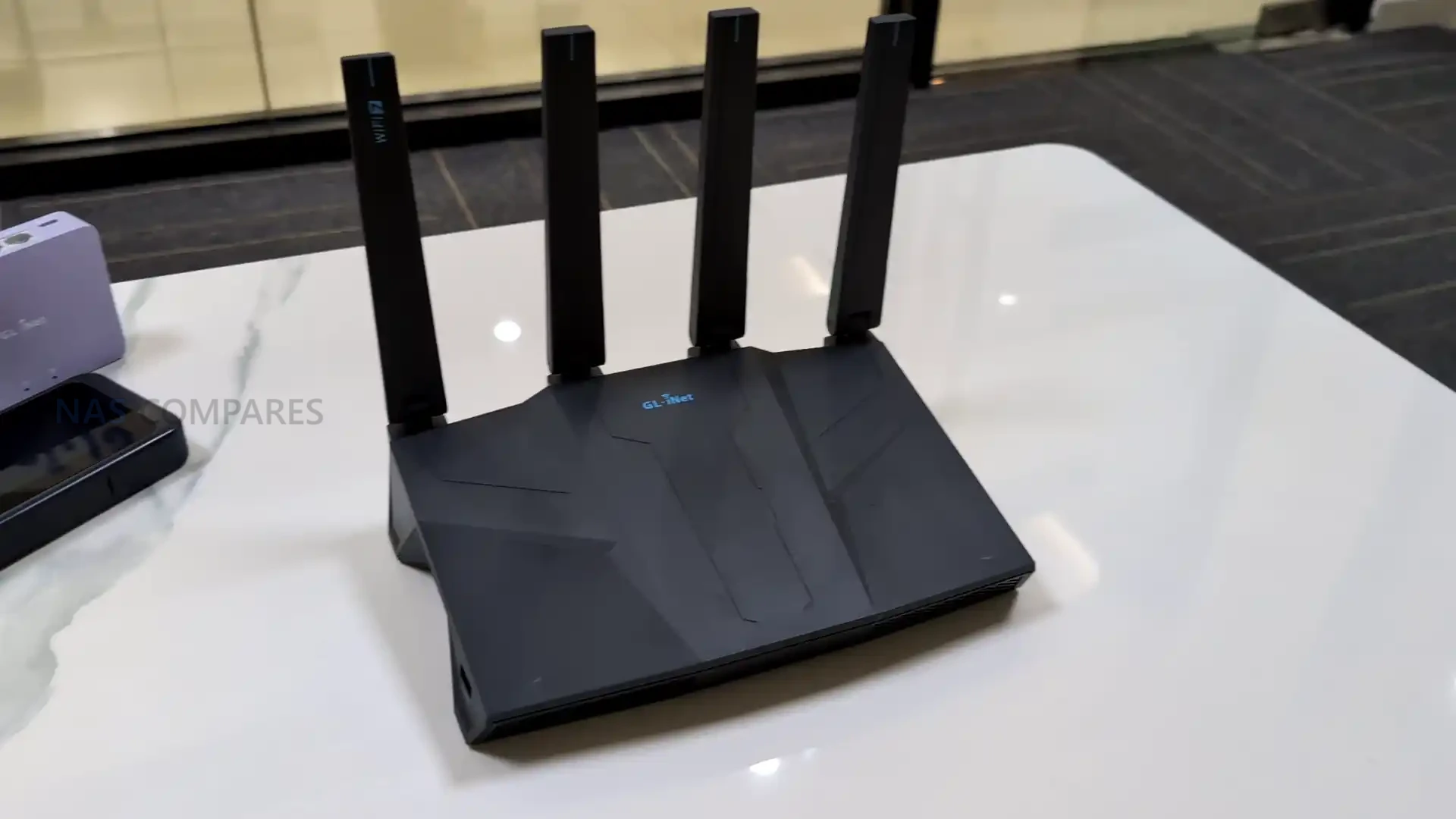
The router maintains a focus on local performance and low latency operation rather than offering the widest possible spectrum support. It does not include 6GHz capability, placing it closer to the Beryl 7 and Slate 7 in terms of band allocation. However, the higher 5GHz ceiling and improved channel management provide an upgrade path for users moving from WiFi 6 or earlier models who still want to take advantage of WiFi 7 features such as improved modulation and multi link operation. USB 3.0 support is included for storage or tethering tasks, and the system integrates the company’s familiar software stack with options for AdGuard Home, parental controls and fast VPN throughput, including WireGuard and OpenVPN DCO at speeds up to 680Mbps.
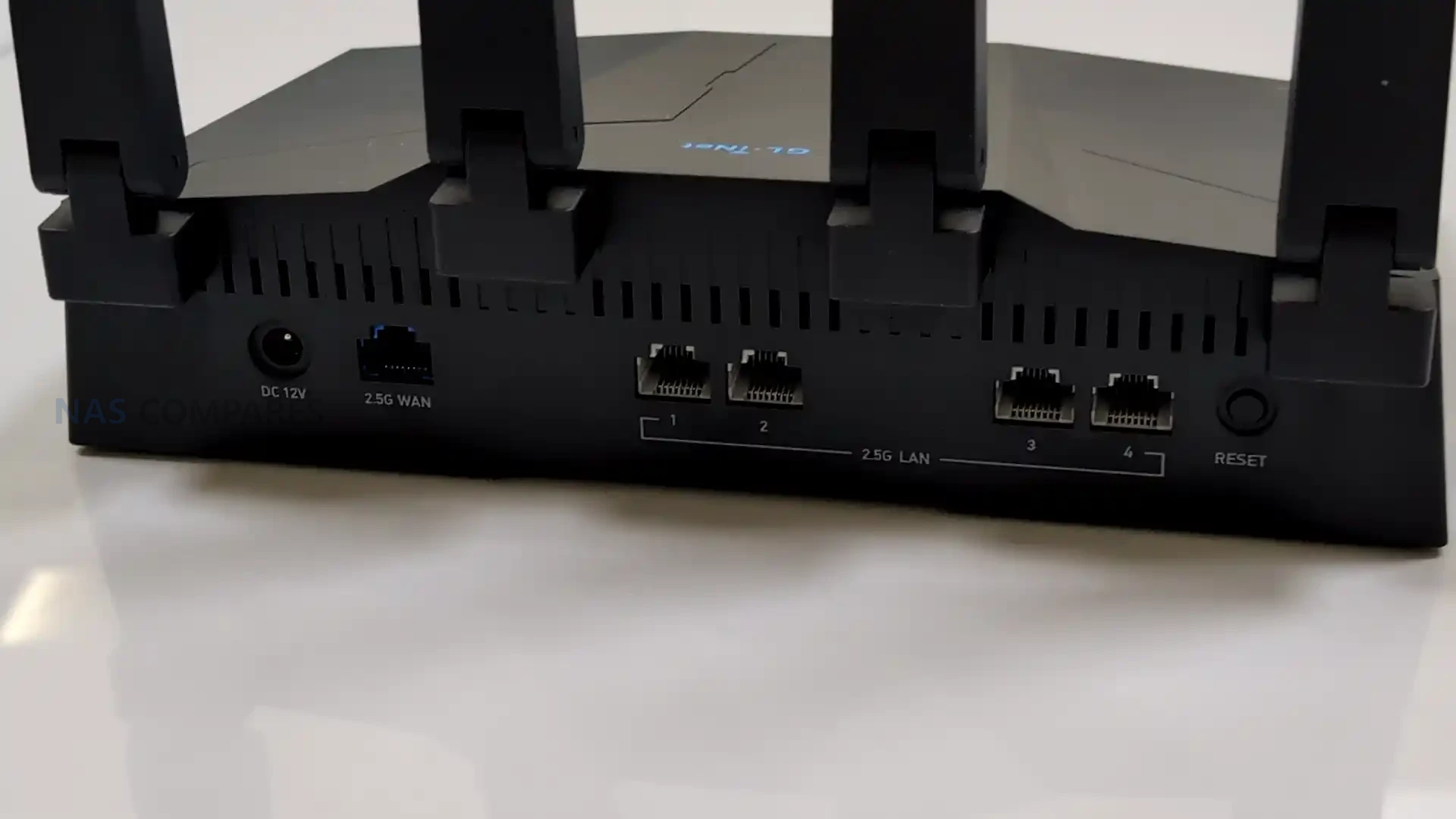
The Flint 3e is presented as a more accessible alternative to the full tri band Flint 3, offering similar processing power and Ethernet flexibility while reducing overall wireless complexity. Its design suits users who require multi gigabit wired networking for NAS systems, workstations or mesh uplinks, while maintaining predictable WiFi coverage within standard two band environments. Power consumption remains below 25W without USB load and below 37.2W with active USB devices. This allows the router to operate efficiently in homes with multiple connected devices, including smart home hubs, streaming systems and personal storage servers.
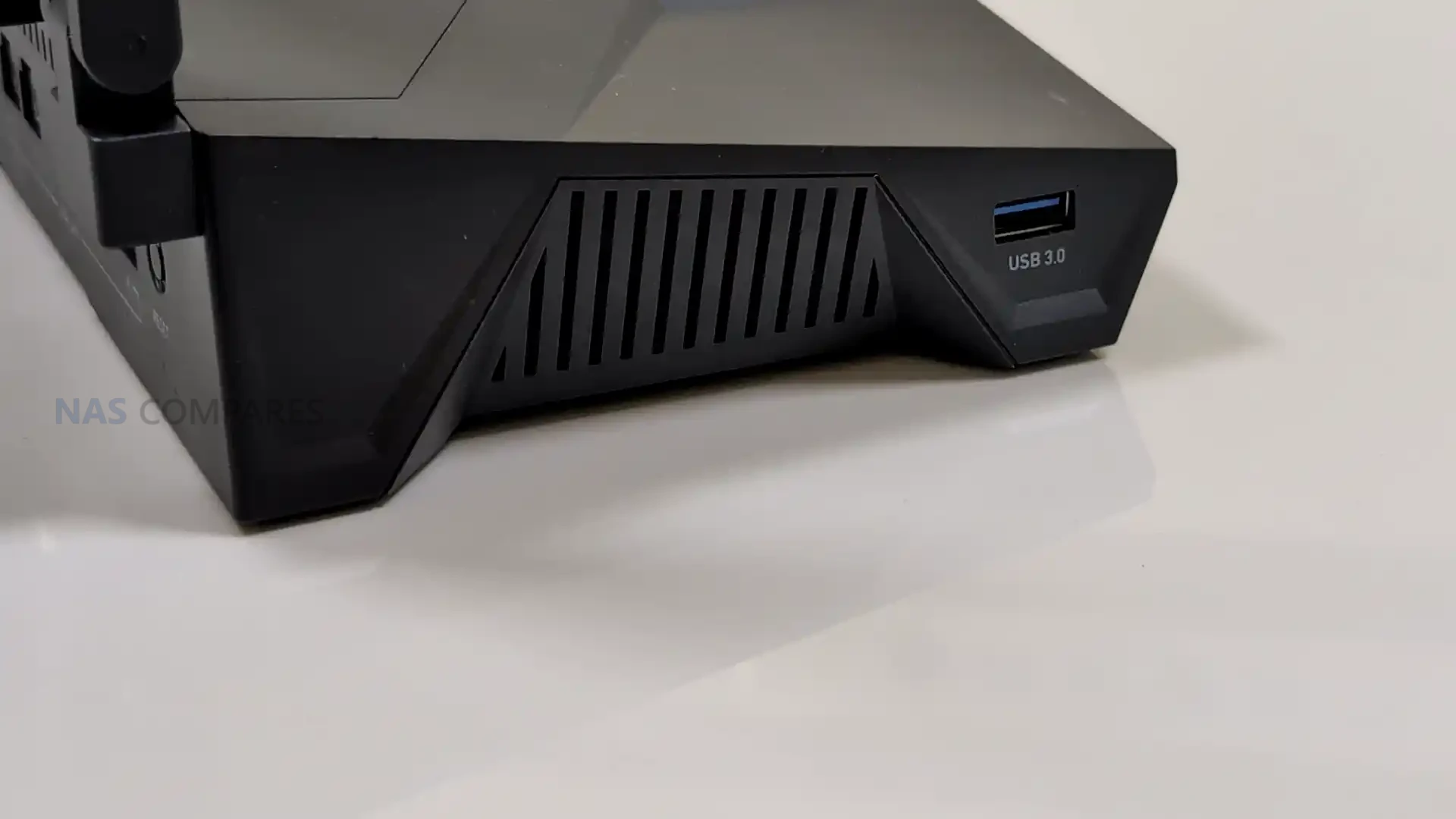
When comparing the Flint 3e with the currently available Flint 3, the key distinction lies in wireless scope and deployment scale. The Flint 3 includes an additional 6GHz band with a 5765Mbps ceiling, a larger 8GB eMMC module and the same five port 2.5GbE layout. This gives the Flint 3 wider spectrum availability, higher aggregate throughput and more headroom for larger properties or higher density environments. The Flint 3e, by contrast, focuses on delivering similar processor performance and identical wired networking while intentionally omitting the 6GHz band to reduce cost and complexity. The result is a model suited for medium sized homes or users who rely primarily on 5GHz and wired backhaul, while the Flint 3 is positioned for broader coverage, multi floor layouts and deployments with more simultaneous wireless clients.
When will the Comet 5G, Beryl 7 and Flint 3e Be Released and What Price?
Gl.iNet’s forthcoming device trio is designed to cover distinct deployment needs across travel, remote management and wired-performance routing. The Beryl 7 travel router brings dual-band WiFi 7, USB-C power, 2.5GbE wired ports and VPN switch functionality; it is estimated to launch at a price similar to the original Beryl AX model. The Comet 5G KVM device increases flexibility by adding 5G RedCap connectivity, HDMI I/O, gigabit Ethernet and WiFi 6, positioning it in terms of design and feature set somewhere between the Comet Pro and the Slate 7; pricing is yet to be confirmed. The Flint 3e desktop router offers dual-band WiFi 7 and five 2.5GbE ports while foregoing the 6GHz band, making it more affordable than the tri-band Flint 3; this pricing strategy targets users seeking strong wired and wireless performance without full spectrum coverage. All models are expected to be formally announced at CES 2026 and become available in Q1 2026.
|
Gl.iNet Comet KVM Series on Amazon HERE
|
Gl.iNet Slate 7 Mobile Router on Amazon HERE
|
 |
 |
📧 SUBSCRIBE TO OUR NEWSLETTER 🔔
🔒 Join Inner Circle
Get an alert every time something gets added to this specific article!
This description contains links to Amazon. These links will take you to some of the products mentioned in today's content. As an Amazon Associate, I earn from qualifying purchases. Visit the NASCompares Deal Finder to find the best place to buy this device in your region, based on Service, Support and Reputation - Just Search for your NAS Drive in the Box Below
Need Advice on Data Storage from an Expert?
Finally, for free advice about your setup, just leave a message in the comments below here at NASCompares.com and we will get back to you. Need Help?
Where possible (and where appropriate) please provide as much information about your requirements, as then I can arrange the best answer and solution to your needs. Do not worry about your e-mail address being required, it will NOT be used in a mailing list and will NOT be used in any way other than to respond to your enquiry.
Need Help?
Where possible (and where appropriate) please provide as much information about your requirements, as then I can arrange the best answer and solution to your needs. Do not worry about your e-mail address being required, it will NOT be used in a mailing list and will NOT be used in any way other than to respond to your enquiry.

|
 |
2x 10GbE to USB4 Adapter - DO YOU NEED THIS?
New Gl.iNet Beryl 7, Comet 5G SIM KVM and Flint 3e Value Router Revealed
NEW UGREEN DXP4800 PRO and DXP4800S NAS REVEALED
NanoKVM Pro Review - SO, SO CLOSE TO PERFECT...
Jonsbo N6 DIY NAS Case - NINE BAYS????
New UnifyDrive UP6 INSANE NAS + UC450 Pro and UC250 NAS Revealed
Access content via Patreon or KO-FI
Discover more from NAS Compares
Subscribe to get the latest posts sent to your email.


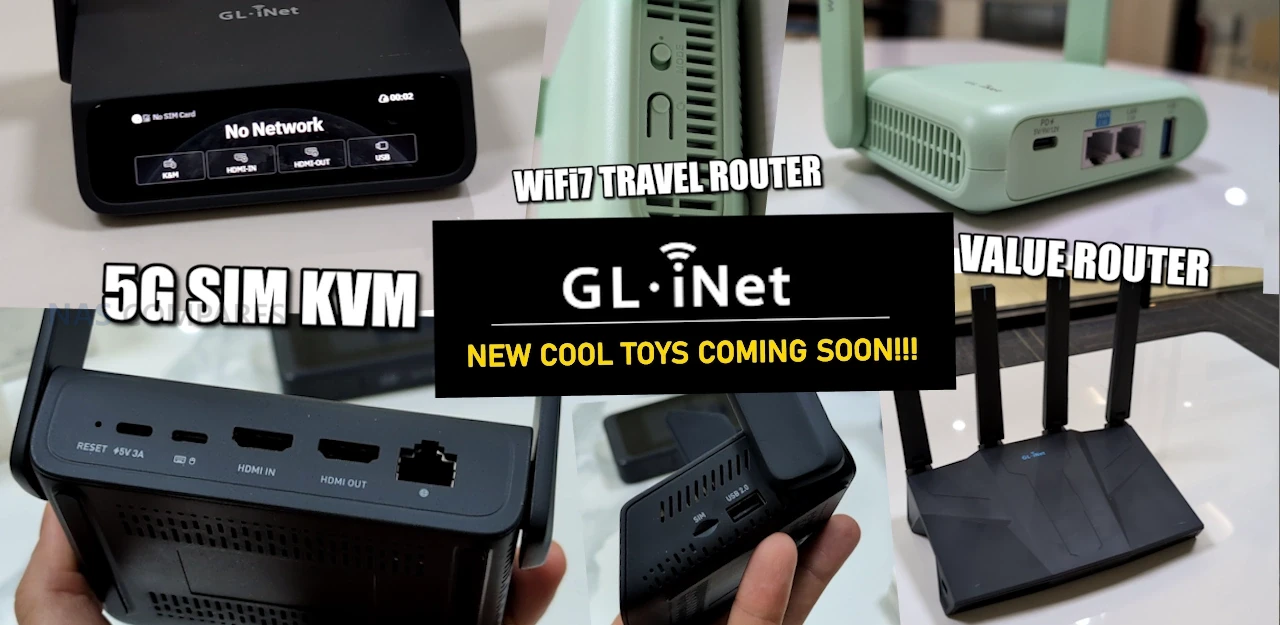





great video. Just bought it for Artemis / Apollo local streaming on my odin 2 portal !
REPLY ON YOUTUBE
The software is just based on OpenWrt.
It’s not their software, although they modified it.
REPLY ON YOUTUBE
Oh come on its antennas.
Both are OK but nobody says antennae.
REPLY ON YOUTUBE
TinyPilot is also a KVM over internet, available now, at $150.00 dollars less than this product.
REPLY ON YOUTUBE
Just a quick question sir, Is the Flint 3 is the bigger version of Slate 7 in terms of connectivity like I can connect Flint 3 to another router wirelessly “of via wifi” and setup a new SSID and password “repeater not extender” which is totally different from source router/wifi? TIA ????
REPLY ON YOUTUBE
What about if you plug a USB Stick in
REPLY ON YOUTUBE
You missed some major whoopers on the disadvantage side which I’m surprised about. They are so obvious. Apart from WiFi 7 this is a downgrade in most departments over Flint2. It’s less powerful and built on worse architecture. That architecture is also qualcomm which causes a major problem if you wish to want to use the more up to date and longer bet openwrt. This will never be supported by them unlike the mediatek cpu in flint 2. This means when glinet drops support, unlike most devices based on openwrt, you will not be able to flash the vanilla more up to date version. Also this means other os options are less likely. For example tomato 64 is now available in full form as a port on flint2 which is a very interesting project. Also wireguard vpn performance on flint 2 is vastly superior. 900 meg vs just over 600 on flint3. Flint 2 is fan less, Flint3 isn’t, so more noisy. Oh and Flint 2 has more Ethernet ports. I would say many of these are deal breakers. The flint 3 is basically a flint 2 e, a cut down worse performance version they’ve put a higher price tag on. Getting the Flint2 is a no brainier as it’s still for sale and also cheaper.
REPLY ON YOUTUBE
For someone who is not that tech savy, the Flint 3 feels like such a great upgrade for me and my family. I bought one yesterday and got it installed. Everything went smooth with the setup itself. Seemed very straight forward. The only problem I had was using my ISP (Spectrum here in Southern California) , I had to actually call their customer service to have them allow the Flint 3 to work and receive internet with my Spectrum modem. But once they got that working on their end, I have almost double the download and upload speed I had before. And now I can actually utilize the Wifi 6E my PC provides. I am curious to see if it will give me better ping and consistency besides speed, but I am sure it will as my ISP’s router was almost 10 years old and only offered 5GHz Wifi. I will check back in here in a few months and let yall know how it has been treating me. Also, I love the app for all the different customization as I have been wanting to get into using VPNs
REPLY ON YOUTUBE
It has vlan in advanced settings. Mesh support can be a future openwrt update. Every POS router has it now. Not sure why it was omitted. It has VPN support. My issue, besides the 1 usb, is that the 1 usb isn’t type-c. That would solve alot of power/speed problems. Perhaps the board just physically doesn’t have that option yet. Regardless, having a slow AF storage device or a gimped cell connection isn’t very attractive.
REPLY ON YOUTUBE
I got Flint 2 and it’s hands down the best consumer grade router I’ve seen in my life. Flint 3 tough… Broadcom chip is little bit problematic for me due to very limited open source driver support. Mediatek would be much better. But I can see how this is no issue for most users.
REPLY ON YOUTUBE
Kickstarter, no PoE, no storage extension, into trash it goes. Good luck paying and beta testing ????. Additionally found out they even have influencer program ????, what a joke.
REPLY ON YOUTUBE
Loved your review on this, I’d bought one before seeing it.
There is one thing I disagree with your “Con 1: No 10GbE ports”.
1. OK Yes it is a problem if your internet connection is over 2.5gbe
2. It’s not a problem if you run 10gbe NAS, I do.
2.1. Because I’ve got a 10gbe switch at the top of my network tree. Below that are 2.5gbe with dual 10gbe up links switches for inter-room . Flint 3 plugged here.
3. No problem the Flint 3 isn’t in the way of local net traffic.
Thank you for all the work you do for the reviews
P.S. I did get a Slate 7 after your review, working great.
REPLY ON YOUTUBE
Hey NASCompares, thank you for making this video. As someone who is starting a homelab, how could I use this device to manage 3 different hosts I have? I saw the PiKVM has an additional hardware add on called the PiKVM Switch, but I know it also works with some third party switches. Does this device here work with any 3rd party switches that would enable things like wake on lan or Ethernet (ATX Boot)?
REPLY ON YOUTUBE
No mesh kills the thought of purchasing one…
REPLY ON YOUTUBE
I have a newbie question; can the host device be either a chromebook or linux system? Thanks.
REPLY ON YOUTUBE
Love your review. It was quite fair and seemed well balanced. Can’t wait for your next one on the Comet Pro.
REPLY ON YOUTUBE
No more kvm kickstarters, tired of finding out they were scams with <50 real units produced. My company bought a bunch that never showed up after they went viral, and I think it may have even been this same brand...
REPLY ON YOUTUBE
“Chinese backdoor to your lan”
REPLY ON YOUTUBE
That thing is *HUUUUUUGGGGGEEEEEEEEEEEEEEEEEEEEE!*
REPLY ON YOUTUBE
Jet KVM never delivered their products so pretty much everything beats it. Including scams where you loose less than $79…..
REPLY ON YOUTUBE
Grigoreluster
REPLY ON YOUTUBE
Everyone’s making a kvm these days, this one really does resemble the jetkvm
REPLY ON YOUTUBE
Would be nice if I could connect to an HDMI switch similar to the PiKVM and then control input and KB/mouse switching via USB.
REPLY ON YOUTUBE
Excellent presentation. Thank you for posting. I really like the looks of this one. Still trying to get my head around the connections and whatnot. Having several ISO’s on the device and then being able to see the console from my PC would really be helpful, even in my home lab. I really get tired of dragging out the monitor and keyboard, DVD and whatnot and the entire mess could be handled in this one device. I often need to see what is on the console of a system and this would really make that easier. The wireless part is just one less cable to have to plug in to get to the console in the homelab. Could you spend a bit more time showing the cabling aspect and the options there for the monitor/mouse/keyboard and DVD capability? For example, if the controlled computer has a displayport video out – how does that connect to this device? Do you use a displayport to hdmi adapter cable? Can the mouse/keyboad connect via a USB-A or do they have to use USB-C? I am just tying to understand the combinations possible and how the cables/adapters and whatnot will work. I guess would like to see more on the actual “physical” part of connecting this up to a myriad of computers – older and newer.
REPLY ON YOUTUBE
Apologies if I missed that and I’d love to be wrong, but I fear I am not … Every modern user interface of a network attached appliance that doesn’t allow to configure IPv6 in the network settings is a huge disappointment. The fact that even not many IT people are not yet too familiar with it is no excuse. We are currently at globale IPv6 coverage of 50% according to Google and IPv6-only networks (with NAT64) start becoming a reality. So any vendor who doesn’t account for that is not to be taken seriously by any network engineer who takes their profession seriously.
REPLY ON YOUTUBE
Does it run Doom?
REPLY ON YOUTUBE
Whaat? What would you need more than 1 gig of RAM on such a device for? It’s an appliance, which does one job – if it does it good enough, then it IS good enough. What else would you want to run on this thing – a crypto miner? ???? EDIT: for context, a freshly installed and rebooted Ubuntu Server barely uses 200 MegaByte! ????
REPLY ON YOUTUBE
it’s a bit a bummer that they still only manage 25MB/s on a quadcore, hopefully they can take time to optimize the OS.
REPLY ON YOUTUBE
there”s a need for so many more local functions – output is nice, why not screenshots via touch front panel, why not a larger display that can just show the damn screen, etc etc.
REPLY ON YOUTUBE
Have you ever considered the KVM Application called Synergy, which works on the same subnet, and you can share the same mouse and keyboard between the host and child PC?
REPLY ON YOUTUBE
Thanks for the review. I have high regard for your analysis and opinion.
I have a couple of Comets. I have no Windows or MacOS in my network, using mainly Linux. You might want to try out the Pro on a TrueNAS host where you have merely a CLI interface. I wound up using a custom EDID definition just to be able to get the console to display without overflowing the window (e.g. hit the enter key some 10 times to fill it from top to bottom). However, I can’t read the tiny characters. GLi support was responsive, but no help since it was Linux. I’m not prone to buy another Comet at any price as it doesn’t serve my basic needs in my homelab which is Linux and BSD-UNIX.
REPLY ON YOUTUBE
Jet KVM company behaves poorly by shutting sending to the US to 2029 instead of just charging more… Glad there is alternative and hopefully pay for doing that.
REPLY ON YOUTUBE
The WiFi is not really useful to me. Either I have Ethernet if it’s a fixed installation. Or I want LTE support for the use case where it needs to be plugged in dynamically into something in an emergency.
I would take USB LTE modem support over WiFi 6 every day.
REPLY ON YOUTUBE
Anyone deploying a Chinese-made IP KVM on their network is taking a serious risk. Doing so without personally building the software or obtaining the binary from a trusted, verifiable source is downright reckless.
REPLY ON YOUTUBE
i cant wait for this to take off, so i can get a more professional focused version that has 24 ports that use USB-C and then an enterprise version that is 2U rack mounted and can provide 45w of power to each device(the point many device start to complain about a low powered charger and will hang at boot to tell you this) and an internal 1G switch for all of these USB-c ports with a 10G uplink
REPLY ON YOUTUBE
I just got the slate 7 and comet KVM. I wanted one of those jet nanos but you can’t find one anywhere for sale. I wish this was out already as it would be able to see every on the screen
REPLY ON YOUTUBE
Why is an established company doing a kickstarter, kinda sketch imo. Maybe its smart for them but not a good look. As soon as I hear kickstarter I’m gone.
REPLY ON YOUTUBE
Can it record the stream from the remote PC, to be used as video tutorial for example?
REPLY ON YOUTUBE
Realistically, I think 32GB is sufficient for this use case. A typical scenario would be one or two “boot ISOs”, maybe a few hardware drivers, and a couple of config files. The fact that ALL of these can be added/deleted remotely makes a lot of storage space unnecessary. Once the OS is installed, anything else can be downloaded via cloud storage. If you need more storage than that, keep a large Ventoy USB drive attached to the target computer.
REPLY ON YOUTUBE
Well, I joined the Kickstarter for one with the ATX board. Even though I have a PiKVM v3, a PiKVM v4, and TWO JetKVMs with ATX adapters… and NONE of them in use.
REPLY ON YOUTUBE
At $99 it makes sense. At $160? Lol
REPLY ON YOUTUBE
8:20 commenting on the RAM seems very arbitrary…why do you want to see more? Did you notice a performance bottleneck because of this?
REPLY ON YOUTUBE
All of these companies releasing things by Kickstarter and Indiegogo definitely lose business because of it. I refuse to buy anything through Kickstarter or Indiegogo because of blatant abuses of those systems. Taking money from backers and never delivering while delivering the same products purchased directly through their website. Completely changing the product and then demanding more money. And then you have Indiegogo and Kickstarter refusing to enforce their own terms
REPLY ON YOUTUBE
I’m excited for their poe option just a couple of weeks away
REPLY ON YOUTUBE
I have terramaster with unRAID, what would work?
REPLY ON YOUTUBE
15:43 maybe you should have blurred the list of WiFi APs there, as someone could use that list to triangulate your location and dox you in the future.
Great little device btw, nice work on the review
REPLY ON YOUTUBE
This is a nice device for some, but not for everyone. These are the points I’m bugged by:
– Not stackable or linkable side by side, so you can’t have multiple on top of each other or reliably positioned side by side, which could be very practical when you set up a server rack.
– The use of HDMI instead of Display Port, but now a lot of displays are going for USB-C instead, which is more versatile even though that’s in an early stage. I’d prefer that HDMI would go away.
– Only one type A connector. At least two USB 3.0 and four USB-C connectors would be preferred.
– If I wanted storage then I’d connect it externally, a device with storage could be a network security concern.
REPLY ON YOUTUBE
Wifi is pretty handy on this one..
REPLY ON YOUTUBE
We need a kvm that can connect to 4 computers at once.
REPLY ON YOUTUBE
You had me at GL.iNet…. Until you said WiFi 6. I’m determined not to buy anything under WiFi 7 unless I absolutely need it
REPLY ON YOUTUBE
Would you know how to use one of these on laptops with the lid closed to get bios level access?
REPLY ON YOUTUBE
I don’t quite get the ethernet connectivity?
I just use a KVM for just that share one keyboard, screen and mouse between a PC and MacBook Pro, etc.
REPLY ON YOUTUBE
If it had supported two, I’d have considered it. Your thumbnail gave me hope.
REPLY ON YOUTUBE
I don’t trust this company from a security perspective. Not going to buy any of their products.
REPLY ON YOUTUBE
jetKVM barely getting theirs out and heres glinet coming out with gen 2 already lol
REPLY ON YOUTUBE
software seems pretty nice, lots of more features than JetKVM, which I have 3 units and I’m still waiting to be able to set up a static IP address. Still this Comet Pro is substantially more expensive. Pricing wise, it is $109+15 shipping, so that is in reality $124, unless I can collect it from anywhere in the world, that is the real price.
REPLY ON YOUTUBE
I like business desktops and laptops with vPro/ AMT since they have OOBM similar to servers ILO / IDRAC. A lot of the micro small factor optiplexes, prodesks, elitedesks that people use for homelabs already have this. Perhaps it a topic you can make a video on?
REPLY ON YOUTUBE
Betteridge’s Law of Headlines is a journalistic adage stating that any headline ending in a question mark can be answered with “NO”.
Lazy, desperate headline writing.
REPLY ON YOUTUBE
Hey Robbie. Great review and I’m looking forward to part 2 so thank you. Something I would love to see is if this KVM can be incorporated with a KVM switch to control multiple devices. It would be great if you could test it that way.
REPLY ON YOUTUBE
The extra discount on their other KVMs was a nice bonus.
REPLY ON YOUTUBE
I like the tailscale integration. Installing on JetKVM is a bit of a pain for a non_CLI user.
REPLY ON YOUTUBE
How is this guy able to pump out so much high quality content? Extremely thorough, long form, chapters, and all so concise and clear. On the other hand, I can barely get out of bed in the morning. There must be a huge production team behind the scenes, right? RIGHT?!?!?!
REPLY ON YOUTUBE
I backed the project, but they don’t make any statement about potential tariffs. I did ask that question, so let’s see what they say
REPLY ON YOUTUBE
I jumped on this one, hopefully it delivers. Excellent video sir!
REPLY ON YOUTUBE
But can it run Crysis? Seriously, your review seemed to consist of criticisms of how underpowered the device was, that it didn’t have a 5090 GPU, 64 gig of memory and a 4TB hard drive. It’s a IP KVM, it’s a last resort device that you use when you aren’t able to get direct access to the computer it’s attached to. Have you worked in a data center?
REPLY ON YOUTUBE
quality looks worse for 100+…
REPLY ON YOUTUBE
Bought the sipeed for 50 bucks and power control with tailscale. Not sure why so expensive.
REPLY ON YOUTUBE
please do a tutorial on how to load a VPN on to a Beelink ME MINI, with ZIMA OS ????????????????
REPLY ON YOUTUBE
Great video! Thanks!
REPLY ON YOUTUBE
Thank you for mentioning at the beginning that it’s a kickstarter campaign. No need for me to continue watching at that point. Side note. If they ask you for feedback, I am far more interested in a small KVM like this that uses POE. I don’t want to power it from a USB port on my device it’s connected to, because I would not be able to see the BOIS settings. I can’t believe that no one out there has built this yet.
REPLY ON YOUTUBE
Its currently $109 + Shipping for the device only. Technically the JetKVM is better value for what you get, unless you need wifi. Cos JetKVM doesnt have wifi. Also, why noone doing PoE? Gib PoE KVM.
REPLY ON YOUTUBE
These new remote KVMs are a game changer
REPLY ON YOUTUBE
I did notice this on Kickstarter. I am considering it, but I just do not see it as a significant improvement over the JetKVM. Other than the lack of PoE I have been extremely satisfied with the JetKVM. Compared to that this seems unnecessarily bulky / large. And I don’t have a need for HDMI passthrough.
REPLY ON YOUTUBE
The thing that I really miss is passthrough ethernet … and u have to occupy two ethernet ports on your router/hub
REPLY ON YOUTUBE
Why HDMI? This should have DP.
REPLY ON YOUTUBE
I’m using a mix of NanoKVM (for servers) and NanoKVM-Pro (for main PC and media PC that have 4k60fps screens). Especially the Pci expansion slot format is amazing. Probably I’ll stick to those, but the fingerbot is a nice feature I’d like, it can be done in the NanoKVM but it’s a bit of a mess. On the other hand lack of PoE is quite bad.
Kickstarting products for an already established company is always a huge turnoff tho.
Ps: not sure if it went anywhere but Sipeed mentioned they are also looking into having a PCIe version that actually uses the PCIE not only for a third choice of power, but also to fake himself as a low power gpu.
REPLY ON YOUTUBE
*UPDATE* 12 Hours before this review was published, I sent a final draft of the video and a list of my criticisms/issues to the brand for their response. I have included their response below:
1. Storage capacity: To suit the needs of most users, we’ve set the default storage at 32GB. If additional storage is needed, the device supports USB expansion, which offers greater flexibility compared to a TF card. The UI for USB expansion is still under development. If you’re interested, you can follow the progress here: https://github.com/gl-inet/glkvm/issues/14#issuecomment-3027081524
2. PoE functionality: As Comet PoE is specifically designed as our PoE-focused product, we are currently prioritizing its development for this use case. We may consider introducing upgraded or new models with enhanced PoE support in the future.
3. Microphone reboot requirement: We’re aware of this issue and are actively working on an optimization. This will take some time, but we’ll keep you updated.
4. SSL certificate support: We’ve added this as a high-priority feature request for the UI.
5. ISO repository suggestion: We’ll also add this to our feature request list. However, as this is a lower-frequency request, we’ll prioritize more widely-requested features first.
REPLY ON YOUTUBE
I just bought the regular Comet. The client only runs on Windows and Mac. Turns out “works with Linux” just means the server it’s attached to can be Linux.
REPLY ON YOUTUBE
I like the NanoKVM-USB for my lab and keep one in my go bag. Very nice to be able to connect locally without needing to connect anything to the network or drag around a keyboard, mouse and monitor. That said yea, it won’t allow you to connect to a remote system.
REPLY ON YOUTUBE
I missed the Kick Starter, will pick-up when available
REPLY ON YOUTUBE
NO POE and the fact that you have a working version means there was NO need for crowd funding campaign from an established company.
REPLY ON YOUTUBE
JetKVM is working great for me. I’d rather just buy more of those.
REPLY ON YOUTUBE
I’m disappointed at the lack of storage or expandability
REPLY ON YOUTUBE
I see they were “inspired” for this on ????
REPLY ON YOUTUBE
Here are some numbers comparing my Flint 2 to my Flint 3 in my home:
Flint 2: Bedroom: 929mbps …….Flint 3: 936mbps
Flint 2: Living Room: 808mbps…..Flint 3: 772mbps
Flint 2: Den: 949mbps…..Flint 3: 943mbps
Flint 2: Garage: 628mbps….Flint 3: 772
These are on the 5g. 6g is similar and MLO is slightly less. Xfinity 1.2 Gb plan. They are basically identical even though the cpu is not as powerful. I returned my Flint 2 because it was randomly disconnecting from clients, especially my Samsung tv’s. Plus wifi 7 will come in handy with the new Apple tv 4k devices I will be getting which are supposed to connect to wifi 7. In my case, the Flint 3 is as fast as the Flint 2 and very stable connection.
REPLY ON YOUTUBE
You haven’t really dived deep enough into the Glinet software and you can actually configure vlan through luci which is the original OpenWrt interface but the Glinet page is just a more user friendly way to configure luci.
REPLY ON YOUTUBE
The USB port of is the GL.iNet Travel router’s support USB tethering from a phone so i wondered
is GL.iNet Travel router firmware supports TP-Link TL-WN722N USB adapter chipset ? (yes or no)
is the router recognise TP-Link TL-WN722N USB adapter as a source of internet ? ( yes or no )
REPLY ON YOUTUBE
It does support VLAN!!
REPLY ON YOUTUBE
do we have a good reliable source of config templetes for various use cases or topologies?
idk why i have such a hard time wrapping my head around each feature or concept separately, i always do better when i have a finished or close to finished setup to go off of.
REPLY ON YOUTUBE
Can you link the little 4g modem you used at the start of the video or at least the name of the product?
REPLY ON YOUTUBE
So many Windows 3.1 sounds!
REPLY ON YOUTUBE
Very cool router. I waited so long for it and had to get one 2month ago. I went with the ubiquity express 7.
It cost basicly the same for 180chf vs 175chf for the Flint.
Software wise i would never want a stupid overpriced TP-Link, Asus etc router. The software on ubi was a gamechanger to me. And so is the flint. Sure its not as fancy but gets lot of control to you as a operator
REPLY ON YOUTUBE
The failover options for a small business and parental control features for home users were very good. I still think they should have included one 10GbE uplink port as fiber internet availability is getting quite good many places. It’s sad when your internet plan provides you with 10Gb, but then being limited by your router if you don’t want to use the ISP device for all your networking needs.
REPLY ON YOUTUBE
Excellent overview, Not to complicated (little over my head) but still educated enough to kind of get it. Im pretty sure I can learn more via google & Reddit. Tyvm
REPLY ON YOUTUBE
No one really cares about 10 gigs it’s more of a gimmick Only because 10 gigs is only available in like 15 to 30% of the world and population like here in Australia we are only just getting introduced to 2 gig internet in the next 2 to 3 months
REPLY ON YOUTUBE
Love your stuff, but go practice your “U”s. Routers route. Routers do not root.
REPLY ON YOUTUBE
since its openwrt, cant you just go into the luci menus and do vlans that way if you needed them? your point is valid about not having it in the main glnet stuff but if you dont mind going through different (and possibly harder) menus, you can get vlans
REPLY ON YOUTUBE
i believe just lik my Beryl AX, VLAN support isn’t baked in the UI. But it should be available via the Luci interface under Advanced Settings. I’ve no idea how to do it, but I’d probably start playing around with my Beryl AX first, would be nice to know that this Flint 3 can be a replacement for my Synology router with 5 networks
REPLY ON YOUTUBE
The strange omission of Mesh capability was the one and only dealbreaker for buying the Flint 3, a router I was otherwise super keen on switching to. It’s a huge and obvious opportunity GL.iNet has just left on the table.
REPLY ON YOUTUBE
I have bough one of these on preorder and I have to say that Wi-Fi 7 is kind off disappointing. Sure i managed to get over 2Gbit/s over 6Ghz band, but MLO is still a mess, cant get over 1250 Mbps over it no matter the device. Would love to see Wan aggregation not just Lan aggregation due to only 2.5 Gbit ports and of course VLAN support only through Luci… The device is nice, but SOLID Wi-Fi 6 routers that can run OpenWRT go for 40 €.
REPLY ON YOUTUBE
You can do VLANs through the OpenWRT Luci interface…
REPLY ON YOUTUBE
I think the mesh critism is wildly unfair .. if they’d promised it, and then not delivered, then sure, you should be pissed.. but they didn’t, so….
REPLY ON YOUTUBE
I am currently trying to see if my Flint3 can do Mesh.
REPLY ON YOUTUBE
I like the Wireless Repeater feature. Don’t most Home Wifi7 Routers out there don’t have this feature?
REPLY ON YOUTUBE
No mesh option means it’s a no from me
REPLY ON YOUTUBE
Man 10G is a scam for cash cows
REPLY ON YOUTUBE
Nice overview!
I’ve received my Flint 3 a couple of days ago and am absolutely thrilled with all it offers!
Sure, I am bummed by the lack of VPN or the 10GB port, but for 140€ early bird price, I couldnt let it go.
For now I only enabled a very small subset of features, and as I get more familiar with the software and how to setup different features, I’ll gradually enable more and more.
That said, for 140€, its simply unbeatable.
REPLY ON YOUTUBE
Great review. I have the Flint 2 it is complicated for an inexperienced learner of routers. However, the company is very helpful and quick to respond to questions. I am happy with it. I am wondering now if I need to upgrade.
REPLY ON YOUTUBE
Did they just clone a hunwai as that design looks suspiciously familiar, it can’t be by chance, if it’s a rebadged firmware, oh hell no
REPLY ON YOUTUBE
Overall I’ve listened to what you’ve said and to be honest I think your pros and cons are quite fair. I’m actually a bit surprised how measured your comments have been in some of the videos I’ve watched lately.
REPLY ON YOUTUBE
I don’t think a 10gbe ports should be a con for most regular non techie consumers. For prosumer/homelabbers I get it to a point. Getting 10gbe hardware is expensive and runs hotter than 1gb or even 2.5gb I just upgraded to 2.5 on my network and feels fine and cheaper than purchasing 10gb hardware that is more expensive and runs hotter.
REPLY ON YOUTUBE
I honestly don’t think lack of 10g as a big, or even “somewhat large” deal. The fact that there are 5 2.5g ports is (one would think for the price) enough. Also while more than one USB port would be great it seems that nearly all routers below a certain price threshold of several hundred only come with one. I’m actually a little shocked that it is a tri-band router since it seems many brands save that extra 6gz band for their upper tiers with even a Wifi7 dual band router being cheaper than a Wifi 6E.
REPLY ON YOUTUBE
Have you tried Astro Warp?
REPLY ON YOUTUBE
Finally a full review. How is it vs the flint 2?
REPLY ON YOUTUBE
batman
REPLY ON YOUTUBE
16:35 are you sure there is no VLAN support? If they kept the access to the advanced Luci like in other models it should be available there as a feature, albeit it’s an absolute mess to use that interface given all the baked in preconfigured interfaces they usually have compared to a stock OWRT install.
REPLY ON YOUTUBE
GliNet devices are super interesting from an hardware standpoint (I guess if you want an all in one router this one is pretty much spot on), but their software has some weird issues I’ve experienced on more than one model, especially when you wanna use them inside a LAN turning the WAN interface into just another LAN port and things start to break.
Right now I’d consider one only if it fully supports stock OpenWRT which I’d argue is actually EASIER to configure when you need to do stuff that’s a bit outside the normal configuration, which apparently is not the case for all models.
Recapping, I’d give it a 9.5/10 if it supports stock OpenWRT.
I can’t see not having 10Gbps as a con, nothing at that pricepoint supports it, let alone including WiFi, and I’d say if your network really needs 10Gbps you’d better off with an x86 serious router
REPLY ON YOUTUBE
Weird that it doesn’t do LuCI channel analysis – is it a chipset limitation? My X3000 does it.
REPLY ON YOUTUBE
I fully agree with your assessment. I have the Slate X1800 travel router. Its a powerful little bit of kit. But heck the UI is pretty hard. You need to know what you’re doing. I spent several rounds of email exchanges with Glinet support before the problem was nailed down to a single toggle which caused internet to not work. Definitely a quick setup menu would have been good.
Also I fully agree with the lack of a mesh feature. These routers are power. I wouldn’t mind changing my ASUS router to Glinets going forward. But a lack of a mesh feature is a real bummer. Otherwise GLinet makes fantastic products. They really give the other brands a run for the money.
REPLY ON YOUTUBE
10G on this class router is not expected, so I don’t see this as a con. Antennas?? Lack of USP multiple ports on a router?? Software.. comparing this class router to Unifi?? Yeah, you are pissing people off with the comments.. it seems you have been unfairly nitpicking on this device. The one thing you failed to address is VLANs. Gotta give this review a thumbs down.
REPLY ON YOUTUBE
Since you are on the Gl iNet topic, please yell into their ears and ask them for a proper PDF manual for their travel routers. Web or HTML manuals are a major PITA. With a PDF manual, we can markup the parts that are important to us for future reference and there are usually a lot. As for using it as a NAS, I loaded a USB stick with music and movies, stuck it in the travel router, plugged it into a power outlet in the car, and now everyone can log in with their device and stream music, podcasts, movies, or… But, getting the DLNA function setup was a lot of trial and error. As for the firmware, please make those dam sliders display whether they are Off or On. They are just gray. One, yes, just one, actually says “Off” or “On”. Just one. Shall I go on ?
REPLY ON YOUTUBE
Possibly in the market for a Flint3 but it’s not on Amazon yet. Also Not sure if you’ll mention it but so far this doesn’t allow vanilla openwrt yet.I ‘m considering this device but would you choose this over a Dream Router 7? For a small coverage I’ve been considering the Slate for my apartment but I figure performance is better on the Flint 3 than the Slate.
REPLY ON YOUTUBE